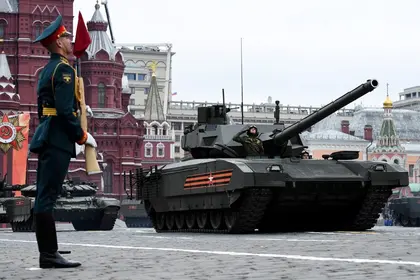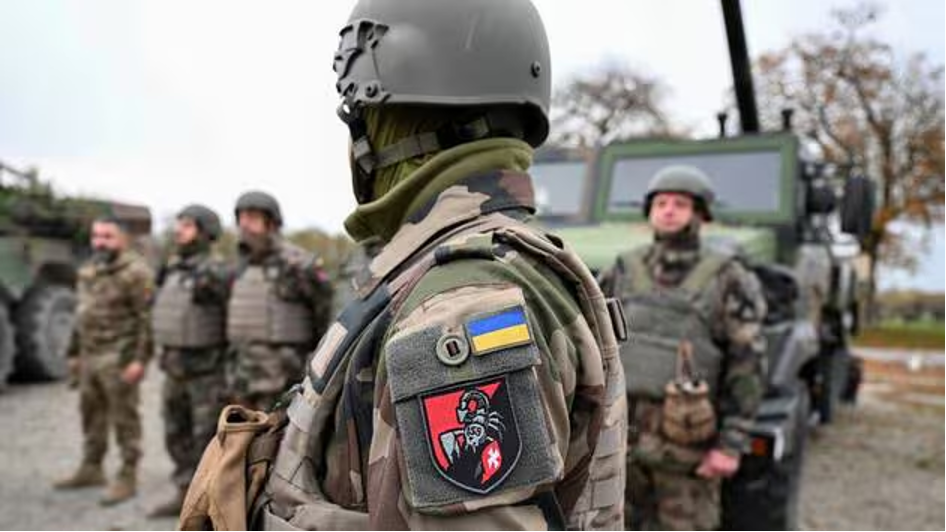Russia is likely to send its top-of-the-line T-14 tanks to the war in Ukraine, but numbers will be limited. The primary Kremlin objective for the deployment will probably be to score propaganda points, says the British Ministry of Defense.
JOIN US ON TELEGRAM
Follow our coverage of the war on the @Kyivpost_official.
The Russian army’s once-fearsome tank force has experienced devastating losses since launching its full-scale invasion of Ukraine in Feb. 2022.
- View the newest war in ukraine update in the Kyiv Post’s daily news stories that came out today.
- Find the newest Ukraine news pieces that came out today.
According to Dutch observer group Oryx, the Russian military has lost at least 1,630 tanks during fighting in Ukraine, most of them T-72 and T-80 models manufactured to Cold War specs. Oryx analysts say the real number is unquestionably higher, because the group uses only independently confirmed data – usually photographs of an individual vehicle.
Latest vehicle kill estimates from Ukraine’s Army General Staff (AGS), published on Jan. 20, paint an even worse picture for Moscow, reporting that Ukrainian troops have destroyed, knocked out or captured 3,139 Russian tanks of all types.
Among the Russian losses were, according to Oryx, at least 44 T-90 tanks. The T-90 is a deeply modernized vehicle fielded in the 2000s, exported to India, and touted by Moscow as a weapons system fully on par with competing western main battle tanks like the U.S. Abrams M1A3 and Germany’s Leopard II.
Publicly available video and Ukrainian soldier accounts say the T-90, like all other Russian tanks dispatched to Ukraine so far, is particularly vulnerable to modern fire-and-forget top-attack anti-armor missiles like the U.S.-made Javelin or Swedish NLAW, or to precision-guided weapons fired by strike drones or artillery.

Economic Woes Mount for Russia‘s War Machine
T-14 dogged by problems
The Kremlin has touted the T-14 to be the world’s best tank. According to Russian state-controlled media, the fully-digitized Armata fires a shell capable of destroying any combat vehicle on Earth, is rigged with armor capable of defeating any incoming munition that exists or might be invented in the near future, and carries its crew in an air-conditioned steel cocoon impervious to radiation.
An upward-looking sensor suite fitted to the Armata uses artificial intelligence to toss interceptor grenades into the air above the turret, making the tank invulnerable to even the very best top-attack weapons in the NATO inventory, like the U.S. Javelin and TOW-2, the British NLAW, or Israeli spike missiles. This is according to sales literature from Armata manufacturer Urlavagonzavod.
The British Defense Ministry statement said: “Any T-14 deployment is likely to be a high-risk decision for Russia. Eleven years in development, the program has been dogged with delays, reduction in planned fleet size, and reports of manufacturing problems…If Russia deploys the T-14, it will likely primarily be for propaganda purposes. Production is probably only in the low tens, while commanders are unlikely to trust the vehicle in combat.”
Anatoly Shariy, a prominent political blogger and poster of pro-Russia content, argued in a Jan. 4 post that even if the Russian military were able to field Armatas, Kyiv’s massive reconnaissance and intelligence collection advantage over Moscow’s forces, combined with corruption chronic in Russian military manufacturing, will already have nullified practically any tactical advantage the Armata heavy tanks might bring.
“We may as well admit that not only has all the money for Armatas, drones and so on been stolen in the Russian Federation, but that (also) money has been stolen for even elementary counterintelligence measures,” Shariy claimed.
Secret Russian new equipment deployments are so poorly secured, that even regional Ukrainian officials “know all the technical details”, he added.
Ukraine’s Interior Ministry spokesman Anatoliy Herashchenko in a Jan. 3 statement questioned the Kremlin’s ability to field Armata tanks in meaningful numbers.
“Among the main reasons [for very limited production of Armata tanks] about which the Kremlin is keeping silent – is poor design, multiple technical defects, total theft, absence of [imported] western electronics, and blocked deliveries of tank parts manufactured in Germany and Japan, because of sanctions,” Herashchenko said.
Russian military observer Mikhail Khodarenok, speaking on Russian state television “news” program 60 Minutes on Jan. 9, said that increasing volumes of western heavy weapons equipment will likely outweigh whatever new weapons the Kremlin might deploy in Ukraine, including Armata tanks.
“In connection with the deliveries of such [advanced western] weapons, the offensive capacity of the Ukrainian army will significantly increase…we will be on the defensive,” Khodarenok concluded.
You can also highlight the text and press Ctrl + Enter






